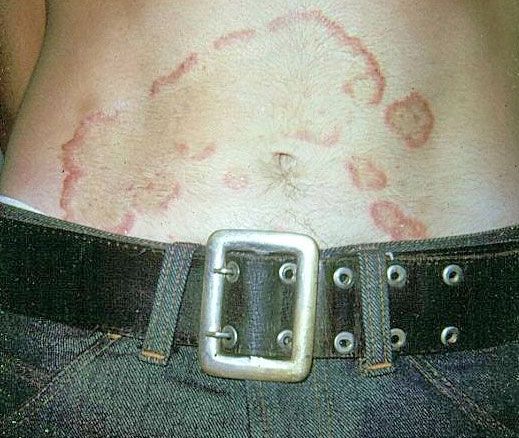- Clinical Technology
- Adult Immunization
- Hepatology
- Pediatric Immunization
- Screening
- Psychiatry
- Allergy
- Women's Health
- Cardiology
- Pediatrics
- Dermatology
- Endocrinology
- Pain Management
- Gastroenterology
- Infectious Disease
- Obesity Medicine
- Rheumatology
- Nephrology
- Neurology
- Pulmonology
Figurate Erythema-A Reactional (Hypersensitivity) State
The differential diagnosis includes figurate erythema, granuloma annulare, sarcoidosis, and Hansen’s disease. Additional history disclosed that the plaques expanded, migrated and disappeared over a matter of days, eliminating all but the correct diagnosis: figurate erythema, a reactional (hypersensitivity) state.

A 25-year-old man noted a gradually increasing, asymptomatic rash on the abdomen. Findings from the remainder of the cutaneous exam, including the toenails, were normal.
Key point: The “rash” consists of fairly well-defined, annular and serpiginous erythematous and palpable plaques, notably free of scale. The differential diagnosis includes figurate erythema, granuloma annulare, sarcoidosis, and Hansen disease. Additional history disclosed that the plaques expanded, migrated and disappeared over a matter of days, eliminating all but the correct diagnosis: figurate erythema, a reactional (hypersensitivity) state.
Treatment: Low- to medium-potency topical corticosteroids will usually resolve individual lesions of this eruption.
Note: The most important thing to explore is the presence of known precipitating conditions, such as occult solid organ malignancy or lymphoma, excessive ingestion of blue cheese, and severe pedal dermatophytosis. None of these was present, and the eruption spontaneously subsided in about 1 year after onset. We will likely never identify the agent responsible for this reaction.
